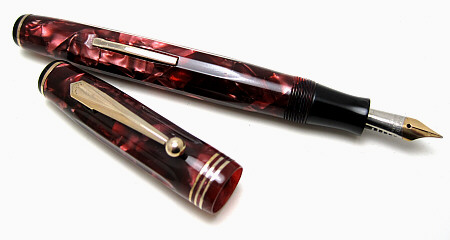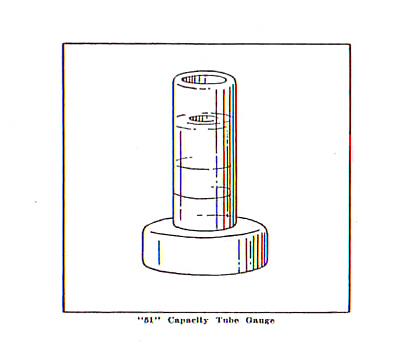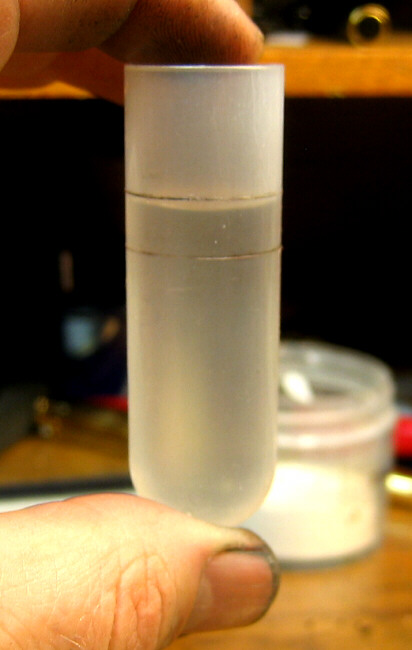What, no refill? …or how to revive a Pentel Clicroller.
Wednesday, May 4th, 2016
I really don’t repair ballpoint pens, but a second post about something that isn’t a fountain pen is going to make it hard to convince people. But really, don’t ask. I won’t fix one for you…..
~~~~~~~~~~~~~~~~~~~~~~~
There are occasions where I need to carry a roller ball pen. Ballpoints (shudder) aren’t on my radar, but a RB is necessary on occasions, and they roll easily enough that I’ll use one. My usual choice is a Retro 51 Tornado. Somehow I’ve accumulated a few. They have cool designs, nice feel, but the truth is that most of the time they sit in the turret next to my “office” chair.
Twenty or more years ago Pentel made a pen called the Clicroller. Not too thin, not too fat, the clip is similar to a Sheaffer reminder clip in that you can’t clip it in your pocket with the refill extended. That’s important if you (like me) are prone to forgetting to turn the knob to retract the point. The only time I’ve ruined a shirt was with a rollerball in my pocket, never a fountain pen!
Pentel quit making the refills years ago, but the pens are still around. Some were anodized aluminum, some slim and striped with a matching watch (lost that one), some lacquer with gold plated trim. Robyn lost the green and gold one that we had… or one of the boys swiped it. Not that it matters. The point is that I went looking for it one day, couldn’t find it, and never did see the thing again.
To give you an idea what I’m talking about, here are a couple that I picked up at the Chicago show….

A number of years ago I got to thinking, and pulled out my Clicroller with its dried out refill and a pair of calipers, and started noodling around. It didn’t take long before I figured out that I could fit a short Schmidt refill into the pen, and that it would fit through the cone in front, but it was too short, and didn’t fit into the end of the barrel. So I made a widget, or adapter if you will, that lets me use the short Schmidt refill in the pen. V1.0 worked perfectly. The button on the end of the refill fits into the widget, the long rod on the other end mimics the over all length of the Pentel 8126 and fits into the barrel perfectly. Note in the picture above, that the point of the refill extends just the right distance from the cone.

I was going cheap and quick, and wanted to see the how the button on the end of the refill fit inside for this one, so I made it out of acrylic. Since all of the stress is axial, it worked.
But then I recently picked up the two in the picture, both new, in the box. So I decided to make a couple more widgets so that the pens can be used again.
At the moment, I have no intention of making these for sale. I’d have to charge as much for the widget as you are likely to pay for the pens. So here’s what you need to know if you want to make one yourself.
Use 1/4″ rod stock. Brass or aluminum will be easy to machine. You can use Delrin too – I just like the idea of a metal widget. Overall length is 0.745″ A little shorter is OK, but I wouldn’t go under 0.735″ The length of the narrow end is 0.415″, and its OD is 0.120″, though this isn’t critical. You can safely go to 0.125″ The hole in the wide end is drilled with a #8 drill, which is 0.199″ There is just enough grip that the widget doesn’t fall off of the end of the refill. It should be 3/16″ deep not including the tip of the drill. I drill into the end until the shoulder is even with the end of the work piece, reset to zero, and then drill in 3/16″ using the scale on the tail stock. Round off the corners with a mill bastard file, and you’re done. Total time, maybe 10 minutes.
Here’s the Schmidt refill next to the original Pentel refill. The tip of the orignal Pentel refills and the Schmidt refills are within a thousandths of an inch of each other:

…and a close up of the brass widget, showing the open end:

It should be possible to make a widget so that you use a DIN/Parker refill. The difference is that instead of a hole for the end of the refill, you have to make it shorter, and with a pin that will fit in the end of the Parker refill. The Parker will fit in and through the cone on the front of the pen, though you may want to change the spring. V3 for the Parker is still in process at this writing, though I can tell you that you need to have at least part of it the full 1/4″. Smaller, and the clip can’t latch with the mechanism in the forward position.


